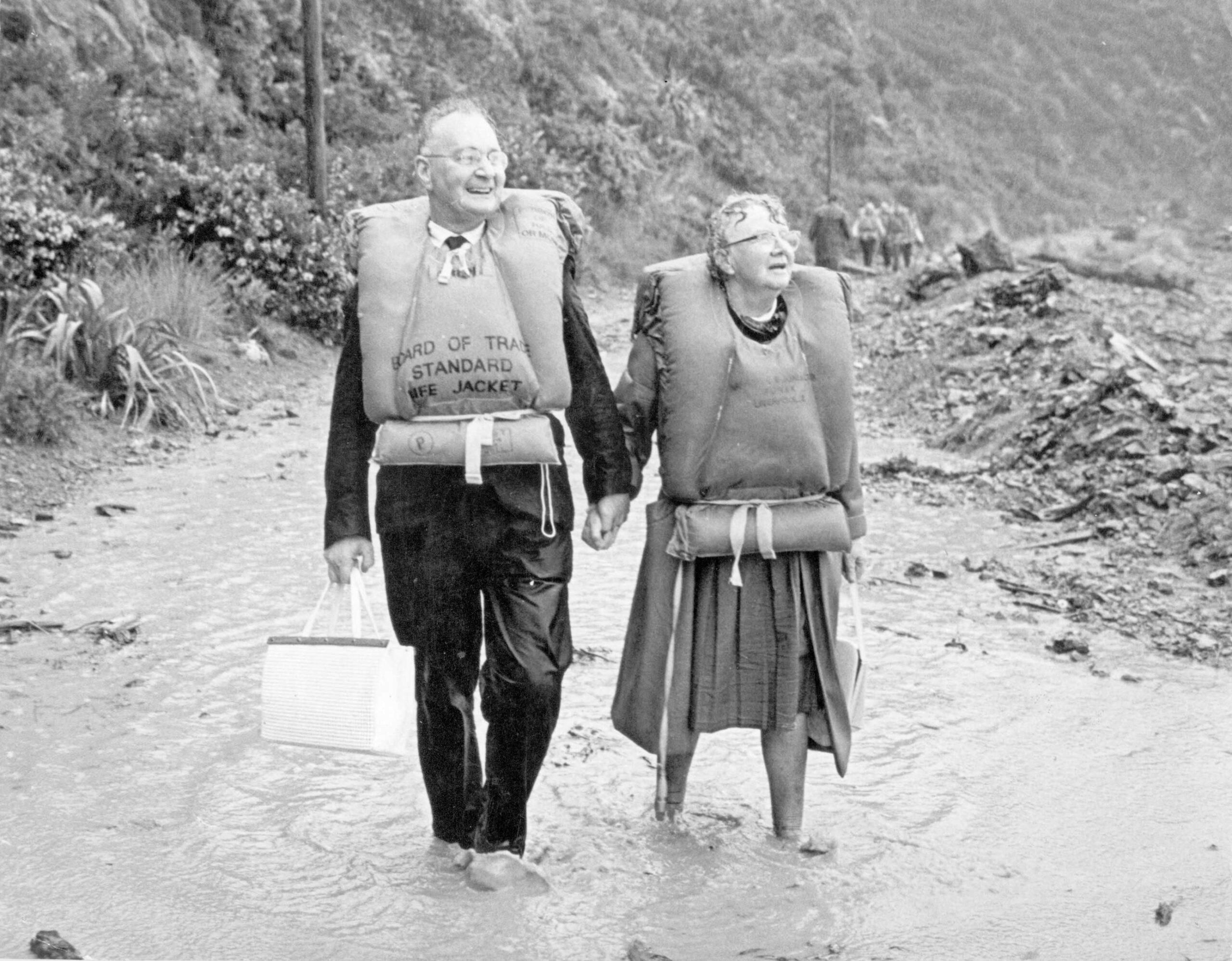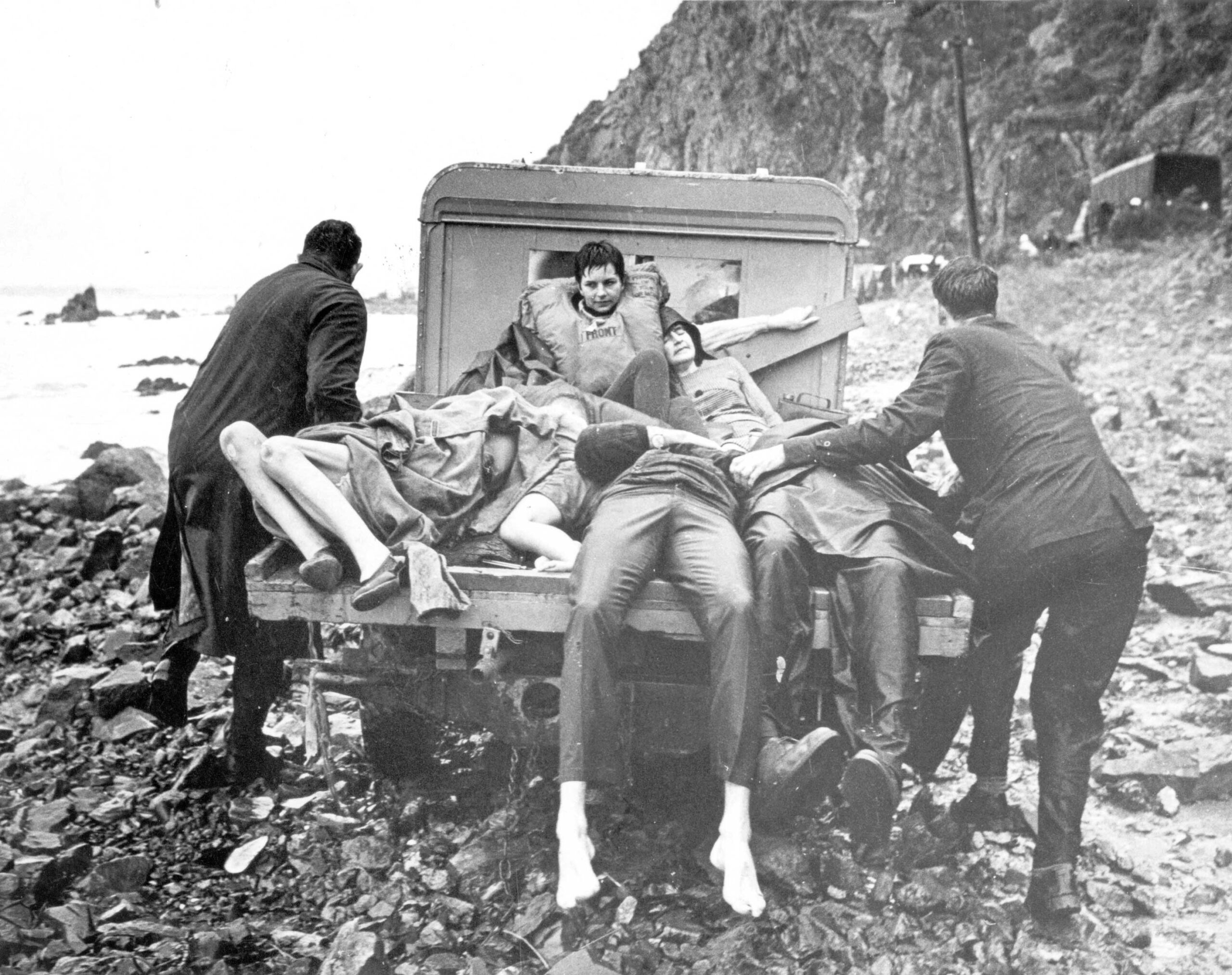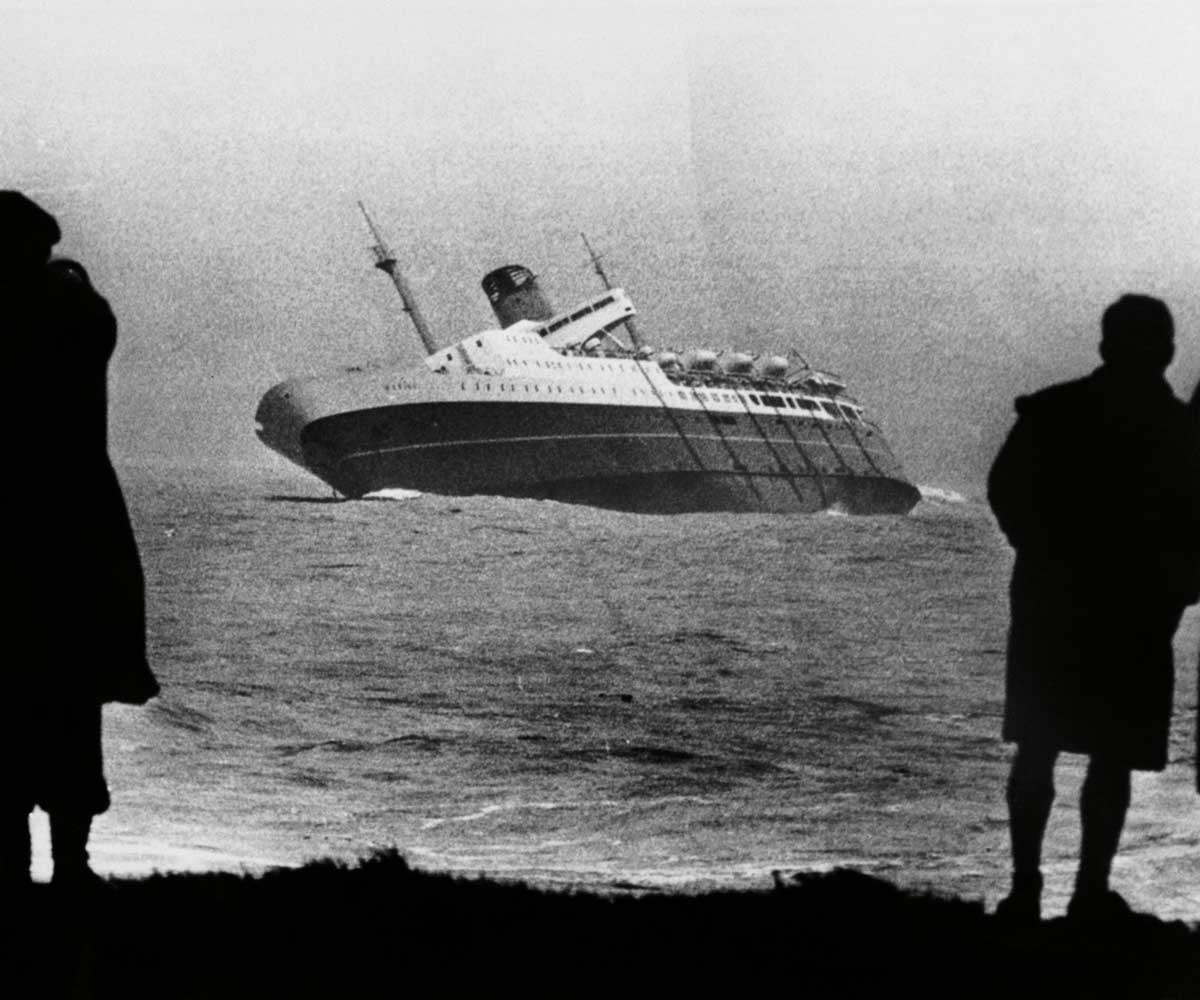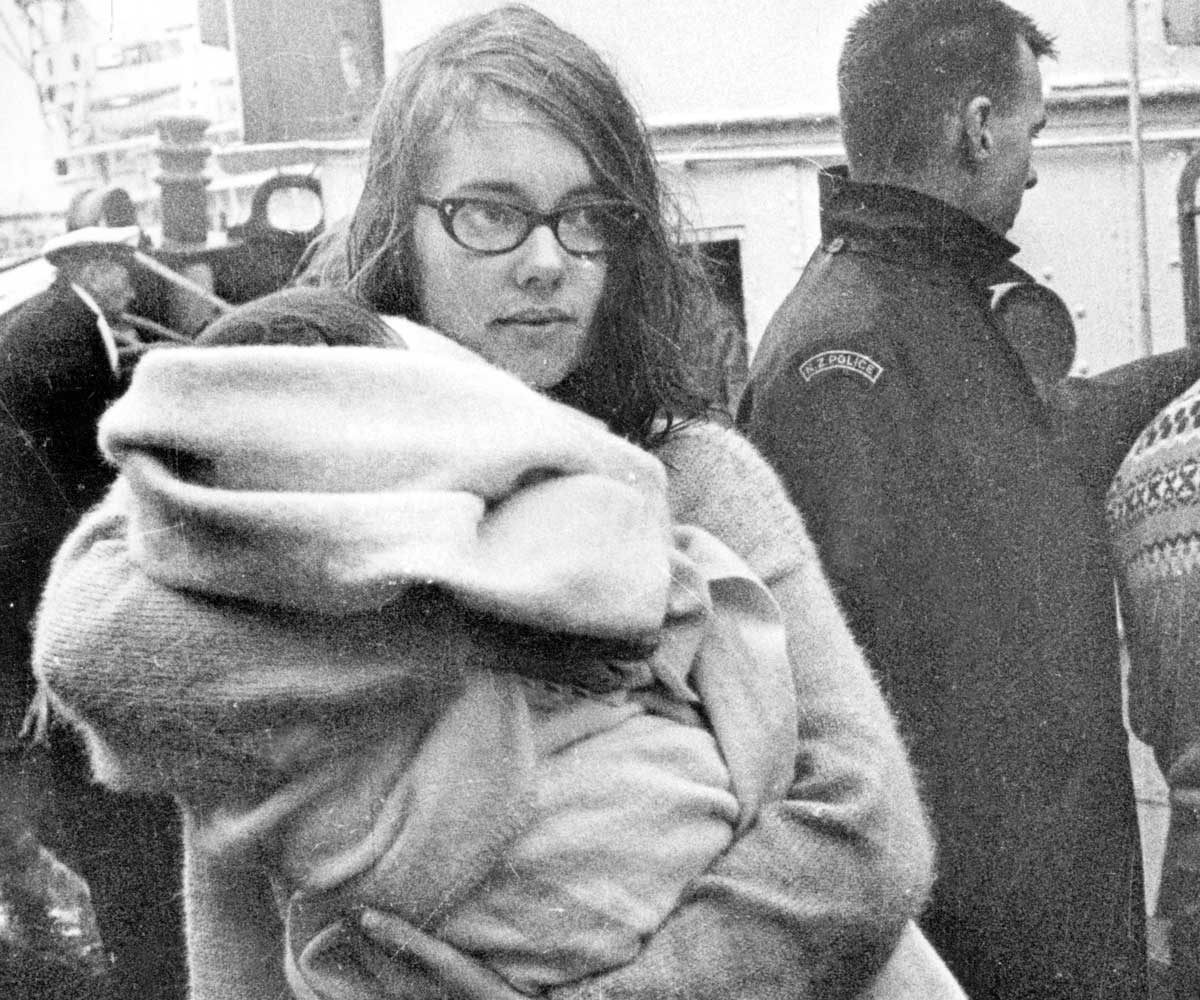This week, we mark 50 years since New Zealand’s worst maritime disaster in modern times, the sinking of the Wahine.
For those who were in Wellington on April 10, 1968 the memory of the ferocious storm that lifted roofs, hammered homes and created deadly sea swells is one that is impossible to forget.
And for those who were on board the Lyttelton-to-Wellington ferry Wahine, or had loved ones aboard, their memories are still crystal clear – even five decades later.

A Wahine passenger being helped to shore.
Fifty-one people lost their lives that day, with the total rising over the years to 53, who died from injuries from the wreck. It was a day of true horror, but one that started off like any other. Wahine – just two years old – left Lyttelton Harbour on the evening of April 9 with 734 people on board.
The seas were rough, but not ferocious when Captain HG Robertson made the decision to enter Wellington Harbour at 5.50am on the 10th. Vessels had entered the harbour in stronger winds than the 50- knot gusts that were blowing.
However, the perfect storm was brewing – tropical cyclone Giselle swept south and collided with a southerly front – and as the Wahine reached the narrow funnel of the harbour’s entrance, the wind speed suddenly increased to more than 100 knots.

Young survivor Joe O’Neill (son of Clarence and Lydia O’Neill) stands frightened, wet and cold in his adult-sized lifejacket after safely making it ashore.
Towering waves hit the doomed ship – with one taking out the ship’s radar system around 6am – and she edged towards the notorious Barrett Reef. It’s believed the captain attempted to turn back to sea, fighting against the waves for 30 minutes, before hitting the reef around 6.40am. With the starboard propeller knocked off and the port engine stopped, the ship was in grave danger.
The captain ordered all watertight doors be closed, both anchors be dropped and passengers were instructed to put on life jackets. For the next six hours, many would stay in the lounge, laughing and chatting, not yet realising just how dire their situation was.

Exhausted survivors.
The Wahine continued to drift, and despite its close proximity to the shore, it was near impossible for rescuers to reach the stricken ship.
An attempt to tow it to safety around 11.50am failed when the line gave way in the terrible weather.
The call to abandon ship was resisted, with the Wahine still appearing to be a safer place to be, rather than the howling, raging seas below. But the ship began listing heavily to starboard. Panicked passengers began sliding across the decks, making their way to lifeboats.

A couple wade along Pencarrow Coast Rd.
Finally, just before 1.30pm, the order was given to abandon ship. More than 400 were forced to swim – some lifeboats could not be launched – and the scenes on-board were chaotic.
Those who survived have incredible and harrowing tales to tell. Yet there are still many stories that remain untold – survivors who have kept their memories from that day tucked away alongside news clippings, hidden out of sight.
But to mark five decades since that horrific day, the Weekly has spoken to survivors, who have opened up about their memories of that day – for which every detail is still remarkably vivid.

Exhausted survivors.
The Wahine has left an indelible mark on former crew member Toby Gray, who has kept his memories private for much of his life while he came to terms with his survival. But for the first time, he tells his tale as a young deckhand responsible for saving the lives of hundreds of passengers.
And as the faces of those survivors were shared around the world, Sharon and Murray Major, who along with their six-month-old daughter, featured heavily in those images, share what this anniversary will mean to them as they take part in the commemorations.
We thank them for sharing their remarkable stories.


